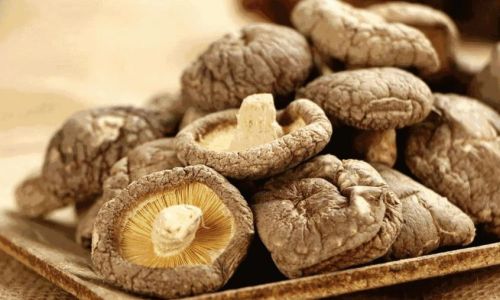Chocolate, a beloved indulgence across cultures, has long been scrutinized for its potential to contribute to weight gain. While its rich taste and mood-enhancing properties make it a go-to treat for millions, concerns about its impact on body composition persist. This article delves into the science behind chocolate consumption and weight gain, exploring the biological mechanisms that determine where excess calories from chocolate are stored as fat. By examining metabolic processes, hormonal influences, and dietary patterns, we aim to clarify whether chocolate consumption disproportionately affects certain body regions—such as the abdomen, hips, or thighs—and provide actionable insights for mindful enjoyment.
The Caloric Density of Chocolate: A Primer
Chocolate’s reputation as a high-calorie food stems from its primary ingredients: cocoa solids, cocoa butter, sugar, and milk solids (in varieties like milk chocolate). A 100-gram serving of milk chocolate, for example, contains approximately 535 calories, with 58% of those calories derived from fat (primarily saturated) and 42% from carbohydrates (largely sugar). Dark chocolate, while slightly lower in sugar and higher in cocoa content, still packs a significant caloric punch, with 600 calories per 100 grams and a fat content exceeding 40%.
The human body stores excess calories as adipose tissue, a process governed by genetics, hormones, and lifestyle. However, the distribution of this fat—whether it accumulates around the abdomen, hips, or other areas—varies widely among individuals. This variability raises a critical question: Does chocolate consumption influence where fat is deposited, or is weight gain simply a function of total caloric surplus?
Metabolic Pathways: How the Body Processes Chocolate
When chocolate is consumed, its macronutrients follow distinct metabolic pathways:

- Sugars: The sucrose and glucose in chocolate trigger a rapid insulin response, promoting the uptake of glucose into cells for energy or storage. Excess glucose is converted into glycogen (stored in the liver and muscles) or, once glycogen stores are full, into triglycerides (fat) via de novo lipogenesis.
- Fats: Cocoa butter, rich in stearic and palmitic acids, is absorbed into the bloodstream as chylomicrons. These fat particles are either used for immediate energy or stored in adipose tissue, particularly in areas with high concentrations of adipocytes (fat cells).
- Cocoa Flavanols: Dark chocolate’s polyphenols may modestly enhance metabolism by improving insulin sensitivity and reducing oxidative stress, but these effects are often outweighed by the caloric load of the treat itself.
Critically, the body does not “target” specific areas for fat storage based on food type. Instead, genetic predispositions and hormonal signals dictate where fat is deposited. For example, androgens like testosterone promote abdominal fat storage in men, while estrogen influences subcutaneous fat accumulation in the hips and thighs of women. However, chronic overconsumption of high-calorie foods like chocolate can exacerbate these patterns, leading to visceral fat gain (around organs) or peripheral fat gain (under the skin).
The Abdominal Predicament: Chocolate and Visceral Fat
Visceral fat, which surrounds internal organs like the liver and intestines, is metabolically active and linked to a higher risk of cardiovascular disease, type 2 diabetes, and inflammation. Studies suggest that diets high in refined sugars and saturated fats—common in milk chocolate—may preferentially increase visceral fat deposition. This phenomenon is partly due to fructose (a component of sucrose) promoting lipogenesis in the liver and insulin resistance, which disrupts fat metabolism.
A 2018 study published in the American Journal of Clinical Nutrition found that individuals who consumed sugar-sweetened beverages (a proxy for high-glycemic foods like chocolate) experienced a 27% greater increase in visceral fat over six years compared to those with lower intake. While chocolate is not a beverage, its sugar content aligns with this mechanism. Moreover, the saturated fats in cocoa butter may compound this effect by altering gut microbiota composition, which influences fat storage pathways.
Gluteal-Femoral Fat: The “Pear Shape” Debate
Subcutaneous fat in the hips and thighs (the “pear shape”) is often considered less metabolically harmful than visceral fat. However, excess caloric intake from chocolate can still contribute to peripheral fat gain, particularly in individuals with estrogen dominance or sedentary lifestyles. Women, in particular, may notice increased hip and thigh circumference due to chocolate consumption, as estrogen directs fat storage to these regions for reproductive energy reserves.

Interestingly, dark chocolate’s higher flavanol content may mitigate this effect slightly. A 2020 study in Nutrients reported that dark chocolate consumption (70% cocoa) improved insulin sensitivity and reduced waist-to-hip ratio in postmenopausal women, suggesting that antioxidants might counterbalance some metabolic downsides. However, these benefits are negligible when caloric intake exceeds expenditure.
The Role of Stress and Emotional Eating
Chocolate’s association with comfort eating introduces a psychological dimension to weight gain. Stress triggers cortisol release, which stimulates visceral fat accumulation and cravings for hyperpalatable foods like chocolate. This creates a vicious cycle: stress induces chocolate consumption, which in turn increases abdominal fat, further elevating cortisol levels. A 2022 survey by the American Psychological Association found that 67% of adults report eating chocolate to manage stress, with 38% consuming more than recommended portions.
Genetic Predispositions: Are Some Bodies “Chocolate-Prone”?
Genetics play a pivotal role in determining fat distribution. Variants in the FTO gene, linked to obesity risk, may influence how efficiently the body converts chocolate’s calories into fat. Additionally, the ADRB3 gene, which regulates lipolysis (fat breakdown) in adipose tissue, could determine whether excess chocolate calories are stored in the abdomen or periphery. However, gene-environment interactions mean lifestyle choices (e.g., physical activity) can override genetic tendencies.
Mitigating Chocolate’s Impact: Strategies for Balance
- Choose Dark Chocolate: Opt for varieties with ≥70% cocoa to maximize flavanols and minimize sugar. A 20-gram serving provides antioxidants without excessive calories.
- Mindful Portioning: Pre-portion chocolate into small servings to avoid mindless overeating. A study in Appetite found that individuals who ate chocolate from a divided plate consumed 30% less than those with unrestricted access.
- Pair with Protein/Fiber: Consuming chocolate alongside nuts or berries slows digestion, blunting insulin spikes.
- Exercise Timing: Engage in resistance training or high-intensity interval workouts (HIIT) post-consumption to prioritize chocolate calories for muscle recovery over fat storage.
- Stress Management: Practice yoga or meditation to reduce emotional eating triggers.
Conclusion: The Calorie Conundrum
The notion that chocolate “makes you gain weight in specific places” is an oversimplification. While excess consumption can contribute to abdominal or peripheral fat gain depending on genetics and hormones, the primary driver of weight gain remains total caloric intake versus expenditure. Chocolate, like any indulgence, can be part of a balanced diet when consumed mindfully. By understanding its metabolic impact and adopting strategic habits, chocolate lovers can savor their treat without undue concern for localized fat accumulation.

In an era of dietary dogma, the key lies in moderation and awareness. A square of dark chocolate after dinner is unlikely to reshape your silhouette, but a daily bar of milk chocolate paired with a sedentary lifestyle is a recipe for systemic weight gain. As with all pleasures, context matters—and chocolate, when approached with knowledge and restraint, need not be a guilty secret but a small, sweet chapter in the broader story of health.






0 comments